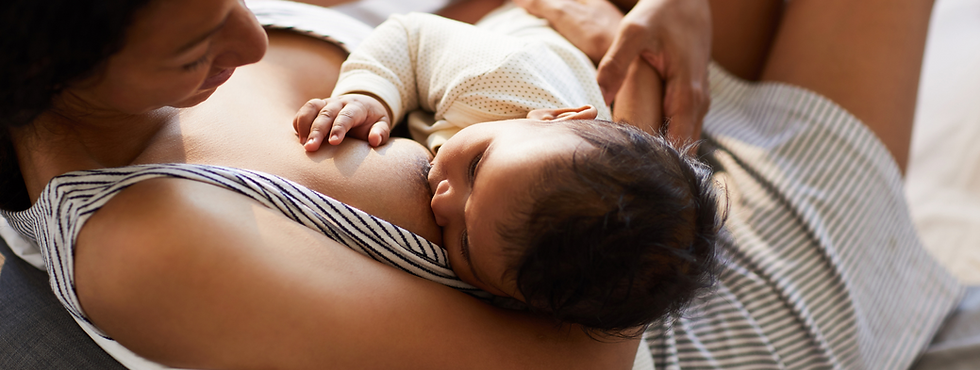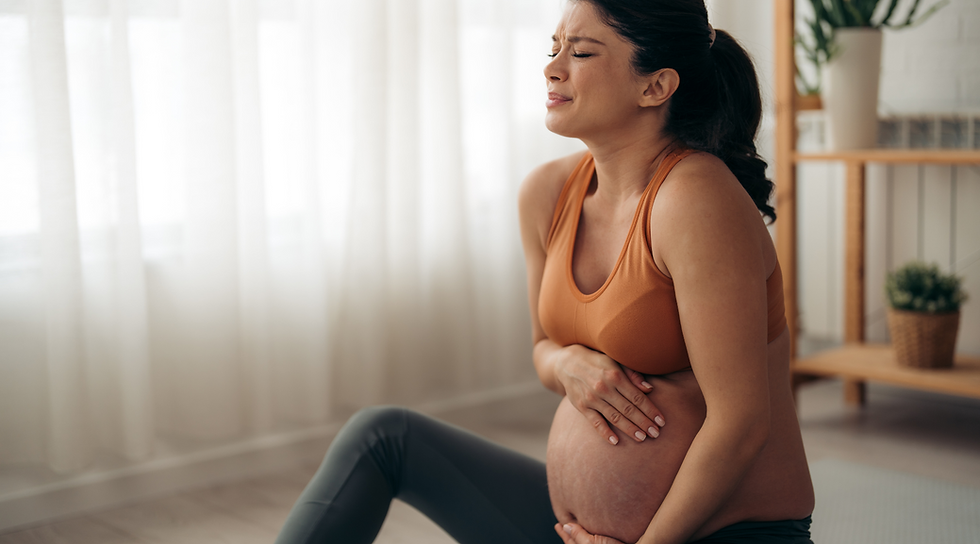It’s Not What You Buy, It’s How You Use It (Part 1)
- Preggy Plus

- Mar 29, 2022
- 4 min read
Raquel Martinez, OTD, OTR
Natasha Scott-Bernard, M.S., CCC-SLP
As therapists, we are often asked…"Where do I get that toy that you use in therapy?", "What type of toys should I get for my special needs child?" Our responses are typically based on two principles: 1. Sensory Preferences & 2. Whether there is an opportunity for communication. In this article, we will focus on sensory preferences.
Consider sensory preferences
Everyone has sensory preferences, but when our preferences are so pronounced that they affect our daily life, they are termed a sensory processing disorder (SPD). We can’t recall even one child with special needs that we have seen in the clinic that did not have an SPD! In many cases, kids with SPD have strong preferences that affect the family routine, for example, SPD might affect where families go, the activities they do within the home, or the food they buy. Without even realizing, many families adjust their lifestyles to compensate for their child’s sensory preferences. Similarly, families can adjust the toys they buy, or the way they use toys to appeal to children’s sensory preferences.
Did you know that in addition to our basic senses (touch, sight, hearing, smell and taste), we have movement senses (vestibular and proprioceptive) and our internal body sense (interoception) as well?!
Here is our list of the top toys/items that we came up with based on the sensory preferences we see the most in the clinic.
A) For those kids who love to move

Some kids just love to move… and we can let them! It can be difficult to get some children to sit at the table for meal time, or school when they just want to run, jump and crash. In many cases, our kids aren’t just choosing to be active, they need the movement to feel regulated. Think of those of us who pace when we’re thinking, or chew or tap our pen... it’s the same concept, just so much more apparent in children who use bigger, more fast-paced motions. Children need movement, and movement is actually a great form of exercise. What we can do is help make their motions less chaotic by providing structure. We can let our kids sit/go on their tummies on a therapy ball to do their tracing, or let them jump on a trampoline, or roll on a scooter board in between building a puzzle, or while singing. Using movement, communication and executive functions at the same time is actually really challenging, and can be a great work out for our kids’ minds and bodies.
Here are some other ideas:
Peanut/ yoga ball - Find them here
Trampoline - Find them here
Scooters/scooter boards - Find them here
B) For those kids that put everything in their mouths

Exploring toys with the mouth (mouthing) is a key part of child development, through which children learn about objects and their properties (e.g., weight, shape, texture). Mouthing is most common in children younger than 2 years, but can last longer in some children. Sometimes mouthing, or even grinding, biting and chewing can become problematic and can affect children’s interactions with toys and people. One method we can suggest is to redirect the child to something that is more appropriate, such as a chew tube. We can also build in activities that provide a lot of input to the mouth throughout the day, such as providing crunchy foods, cold or warm drinks, using long, narrow straws, or blowing bubbles.
Here are some other ideas:
Chewlery - Find them here
Chew tubes - Find them here
Straws
Vibration - Find them here
C) For those kids that love watching objects in motion
All kids, and especially those who don’t yet communicate verbally, enjoy toys that result in something happening, called cause and effect toys. These toys usually involve something moving, like a car moving down a ramp, or a figure popping up. Quite often, the effect also has a sound. Children learn that their actions can lead to a response, and also learn how to maintain attention to play, and how to play with intention. Cause and effect toys are the first form of structured play, before which children usually engage simply in sensorimotor exploration.
Here are some examples:
Pop up/roll toys - Find them here Tops
Wind up toys
D) For those kids that love touch
Sensory bins are gaining popularity, and we’re glad they are! Sensory bins are simply containers filled with some form of textured item, such as sand, play foam, dried rice or beans, shaving cream, or even soapy water. There are so many ways to play with sensory bins, such as scooping and pouring, searching for small toys, using tweezers, making shapes, or just getting used to the feel of new items. Quite often, sensory bins have a calming effect on our little movers, proving tactile input that can have a regulating effect.
Sensory bins - Find them here and here.
Textured toys - Find them here
E) For those kids that are great at puzzles and other visual activities

We often see kids, especially those on the autism spectrum, who have very strong visual processing abilities. Matching, categorizing, and building are strengths for these kids. We can give them activities that play to these strengths, such as: Lego blocks, tangram puzzles, and these other ideas:
Shoebox tasks (DIY ideas here: Click here)
Matching - Find them here
Play-Doh - Find them here and here.
Building blocks In Part 2 of this article, we will discuss toys that provide opportunities for communication. We can't wait to share more insightful information with you!





Comments